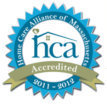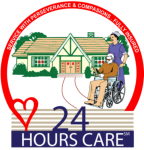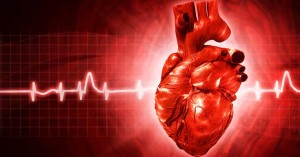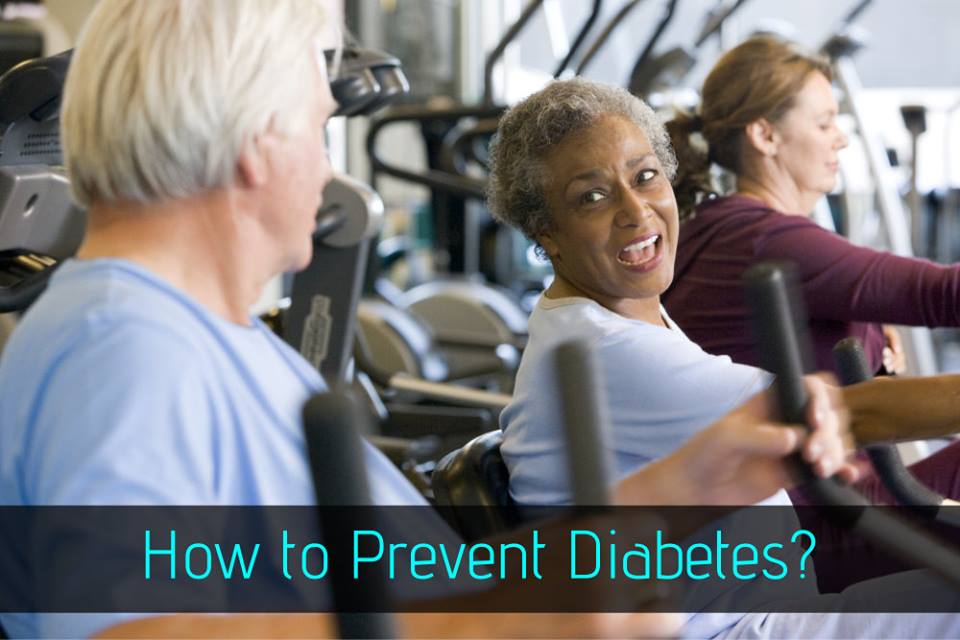Dementia and Sleep Disorders

Dementia is a blanket term that refers to a cohort of pathophysiological conditions. The most common form of dementia is Alzheimer’s disease. Other examples of dementia include vascular dementia, Lewy body dementia, Parkinson’s disease, Shy-Drager syndrome, Huntington’s disease, alcohol-related dementia, AIDS-related dementia, and Creutzfeldt-Jakob disease. Common symptoms of dementia include progressive loss of cognitive functions such as memory, social skills, and emotional reactions.
Dementia and sleep disorders share a paradoxical ‘chicken and egg’ relationship. While many people living with dementia tend to experience poor sleep on a regular basis, patients diagnosed with certain sleep disorders – such as insomnia and sleep apnea – are also more likely to develop dementia symptoms.
This article will take a closer look at the link between dementia and sleep disorders, as well as some strategies for diagnosing different conditions and mitigating dementia-related sleep issues.
The Relationship Between Dementia and Sleep Disorders
According to the latest estimates from the Institute for Dementia Research & Prevention (IDRP), 1 in 6 women and 1 in 10 men will develop dementia-related symptoms after the age of 55. Alzheimer’s disease, the most common form of dementia, affects 60% to 70% of dementia patients. This condition is characterized by decreased production of the acetylcholine neurotransmitter and a progressive loss of cognitive functions. Roughly 5.4 million Americans have Alzheimer’s disease and the number is expected to increase to 14 million by 2050. Other more common forms of dementia include vascular dementia, which affects blood flow to the brain and can lead to strokes; and Lewy body dementia, which is characterized by the buildup of irregular proteins in the nervous system.
Three categories of people are at a heightened risk of dementia: the elderly, patients with neurodegenerative diseases, and patients with mild cognitive impairment. Although 40% of elderly patients have sleep-related complaints, sleeping disorders like insomnia are less common in healthy older people and are more often associated with comorbidities.
In addition to insomnia, other sleep disorders, such as sleep apnea, REM sleep behavior disorder (RBD), restless legs syndrome (RLS), periodic limb movements (PLMs) and sleep-disordered breathing (SDB), become more prevalent with increasing age. RBD and sleep apnea are of particular interest with regard to dementia. RBD is used as a contraindication of Lewy body dementia, and may also be used as prognostic and predictive tools for neurodegeneration in Parkinson’s disease. Similarly, obstructive sleep apnea (OSA) has several common causal factors with Alzheimer’s disease; OSA is also widely believed to contribute to the pathophysiology of Alzheimer’s.
Through interviews and polysomnogram tests, scientists have noted longer sleep latency, increased sleep fragmentation, and a decrease in both sleep efficiency and total sleep time in dementia patients. The most common sleep disorder symptoms in patients with dementia are increased daytime sleepiness, nighttime wandering, confusion, and agitation (also known as sundowning). The origins and mechanisms of sundowning are still unknown, but many suspect these behaviors are related to the early circadian cycle of senior citizens.
In most cases, patients with dementia experience progressively less REM sleep throughout the night, as well as an increase in nighttime awakenings. The higher REM latency in dementia patients can be attributed to the overall reduction of the REM phase. Neuronal degeneration in Alzheimer’s contributes to the sleep pattern changes by damaging the basal forebrain and the reticular formation of the brainstem, two regions that help regulate sleep patterns. Recently, a-synuclein aggregates have been attributed to dementia; synuclein proteins are normally present in synapses of nerve terminals in the brain.
An estimated 30 to 50% of Parkinson’s Disease patients suffer from excessive daytime sleepiness; this percentage grows as the disease becomes more advanced. Parkinson’s patients often have insomnia that comes and goes through the course of the disease, as well. A recent study found insomniacs and seniors with sleep problems tend to have beta-amyloid plaques in their brains at a higher rate than healthy sleepers. The characteristic plaques have even been found in the brains of elderly insomniacs who have not been diagnosed with Alzheimer’s or other dementia-related conditions.
Dementia and Sleep Apnea
Dementia patients often exhibit the symptoms of sleep apnea, such as chronic snoring and/or temporary loss of breath during sleep. Many experts believe that sleep apnea is directly correlated to induction of severe dementia, and vice versa; even though sleep apnea does not directly cause dementia, the effects of sundowning and persistent hypoxic conditions can symptomatically amplify dementia-related symptoms. Sleep-disordered breathing episodes are quite common; 90% of people with moderate-to-severe Alzheimer’s experience at least five respiratory events per hour of sleep. The overall prevalence of SDB in patients of dementia varies between 33% and 70%.
Insomnia as a warning sign of dementia
A recent study suggests a link between sleep deprivation and increased risk for Alzheimer’s. Levels of amyloid-beta protein in the bloodstream rise during waking periods and decline during sleep. This protein makes up some of the brain plaques found in Alzheimer’s patients. Problem sleep can be an early indicator of dementia. Alzheimer’s patients often see changes in their sleep patterns early on; what was once a 20-minute daytime nap now stretches to several hours per day.
In a recent long-term longitudinal study, older people who complained of daytime sleepiness, restless nights, and increased use of sleep aid medications were much more likely to develop Alzheimer’s symptoms within two years. The Canadian researcher who led this analysis stated that sleep problems were the single strongest early predictor of Alzheimer’s disease. Additionally, another study found that mice implanted with characteristic amyloid-ß plaques in their brains experienced higher rates of sleep disruption than the control group. When the plaques were removed from the mice, their sleep cycles returned to normal.
Diagnosing Sleep Disorders in Dementia Patients
Accurately diagnosing sleep disorders in dementia patients can be quite tricky, due to an abundance of underlying causes, mitigating factors and common causal symptoms. In patients with dementia, sleep disturbances are generally categorized into four different categories:
- Trouble falling or staying asleep (insomnia)
- Excessive daytime sleepiness (hypersomnia)
- Difficulty breathing during sleep (apnea) or excessive nighttime physical activity (such as restless leg syndrome)
- Nocturnal hallucinations and/or behavioral problems
It should be noted that dementia patients may simultaneously exhibit symptoms of more than one complex; this sort of co-morbidity can further complicate the diagnostic process. Additionally, sleep disorders can occur due to other factors, such as medication side effects or conditions of long-term care facilities.
Let’s look at some of the diagnostic criteria used to evaluate different sleep disorders in elderly patients and patients with dementia.
Insomnia
Although insomnia symptoms vary from person to person, the condition is normally divided into two categories: sleep onset insomnia, or the inability to fall asleep easily; and sleep maintenance insomnia, or the inability to remain asleep throughout the night. Insomnia may also be considered a primary condition that arises independently, or a comorbid condition that simultaneously exists with one or more other disorders.
In order to receive an insomnia diagnosis, patients must experience trouble falling or staying asleep for a period of one month or longer. ‘Chronic insomnia’ is diagnosed sparingly in older adults; many take one or more medications to address different conditions, and ‘psychosocial comorbidities’ are also taken into account. An insomnia diagnosis will require a detailed overview of the patient’s medical history, including all prescriptions, and a thorough physical exam.
Hypersomnia
Like insomnia, hypersomnia is a broad term referring to conditions that cause excessive daytime sleepiness (EDS) that are not related to insomnia/sleep deprivation. Hypersomnia is characterized by the inability to remain awake and alert during normal ‘waking hours’. Some of the most common hypersomnia disorders include narcolepsy and idiopathic hypersomnia; these disorders may arise on their own, or develop due to other factors like substance abuse or medication side effects.
Although research about hypersomnia in older patients is somewhat scant, physicians often use the same set of diagnostic criteria for these populations as they would for other patients. They will typically interview the patient about their sleep history, as well as any current sleep partners. Doctors will also inquire about the presence of cataplexy or a sudden loss of muscle strength that may accompany narcolepsy and other hypersomnia conditions. Patients may be asked to maintain a ‘sleep journal’, which includes the onset and frequency of daytime sleepiness episodes, as well as the patient’s nightly amount of sleep.
Sleep Apnea
Sleep apnea is generally defined as the temporary loss of breath during sleep. Apnea is broken down into two specific conditions: obstructive sleep apnea (OSA), characterized by an obstruction of the upper airway; and central sleep apnea (CSA), which arises due to problems in the cardiovascular and/or central nervous systems.
In addition to EDS, severe snoring is a common symptom in people with sleep apnea. Other telltale signs include choking, gasping for air and nocturia (or excessive nocturnal urination). Apnea is common in elderly people, as well as those with a history of obesity.
Restless Leg Syndrome (RLS)
People with RLS experience painful sensations in their legs that are severe enough to disrupt their sleep. The sensations are often described as an intense itch or tickling that persists throughout the night. Although some people independently develop RLS early in life, it is a secondary condition in most patients. It is widely believed that iron deficiency plays a role in the development of RLS as a secondary condition.
There are currently no laboratory tests used to diagnose RLS, so physicians must rely on patient interviews to determine if the condition is present. People with RLS often feel a strong urge to move their legs while lying down, even though the painful sensations will almost always intensify when their bodies are at rest. The majority of RLS patients also experience more intense pain, as well as stronger urges to move or fidget, at night. Physicians use these criteria to differentiate RLS from other conditions that can cause soreness and pain in one’s legs.
Circadian Rhythm Sleep Disorders (CRSDs)
Circadian rhythm sleep disorders (CRSDs) are characterized by normal sleep patterns that occur at irregular times of the day, often due to misalignment with the internal circadian clock. Examples of CRSD include advanced sleep phase disorder (ASPD), when patients fall asleep and wake up at relatively early times; and irregular sleep-wake disorder (ISWD), when one’s daily sleep patterns are broken up into chunks over a 24-hour period, rather than in one prolonged phase. CRSDs are particularly common in elderly people due to changes in their circadian rhythms brought on by aging, as well as reduced exposure to natural light and a decrease in physical activity.
Physicians can use certain biological indicators – such as melatonin levels and body temperature – to evaluate whether or not a patient has problems with their circadian clock. However, the symptoms of CRSDs can be misleading; as a result, most doctors will conduct a full patient screening to check for other sleep disorders (such as insomnia and sleep apnea), as well as psychological conditions like depression or anxiety.
Parasomnia
Parasomnia disorders are characterized by involuntary physical or emotional reactions during sleep. One of the most common parasomnias in elderly people and people with dementia is REM sleep disorder (RBD), which involves violent physical movement that arises during dreaming. Other examples of parasomnia include night terrors, sleepwalking, and enuresis (or bed-wetting), although these conditions are more common in children and young adults.
Physicians will typically diagnose RBD by reviewing a patient’s medical history and conducting tests that evaluate levels of muscle activity during sleep. RBD is often comorbid with certain dementias, such as Parkinson’s disease and Shy-Drager syndrome, and patients are also routinely evaluated for sleep apnea and nocturnal seizures.
Important Questions
Due to the complex relationships shared between different sleep disorders, and additional complications that arise due to dementia, patient interviews are essential for diagnosing sleep conditions in elderly people or people with dementia. A study published by the Journal of the American Geriatrics Society notes that the following inquiries can help doctors pinpoint specific sleep disorders, and rule out related conditions in the process.
- What times does the patient normally go to bed at night and wake up in the morning?
- Does the patient usually have trouble falling asleep at night?
- Roughly how many times does the patient wake up at night?
- If the patient wakes up during the night, do they typically have a hard time falling back asleep?
- Does the patient’s bed partner say that they frequently snore, gasp for air or stop breathing during the night?
- Does your bed partner say (or is the patient aware) of kicking or thrashing about while asleep?
- Is the patient aware of ever walking, eating, punching, kicking, or screaming during sleep?
- Is the patient sleepy or tired during much of the day?
- Does the patient usually take one or more naps during the day?
- Does the patient doze off involuntarily during the day?
- How much sleep does the patient require to feel alert and function well?
- Is the patient currently taking any type of medication or taking other measures to help them sleep?
Additional questions for patients may relate to leg restlessness, nighttime urination, daily exercise and physical activity, light exposure, caffeine intake and prescribed medications.
Treatment of Sleep Disorders in Dementia Patients
Effective cures remain elusive for both dementia and dementia-related sleep disorders, but certain treatment methods can alleviate most of the persistent symptoms. Medications can restore or improve cognitive function for patients with Alzheimer’s and other dementias; however, medications that alleviate the symptoms of insomnia and other sleep disorders in dementia patients have yet to be pinpointed. A meta-study by the UK-based Cochrane Groupnoted that “there is very little evidence to guide decisions about medicines for sleeping problems in” people with Alzheimer’s.
The high incidence of sleep-disordered breathing in demented patients is contraindicative that neuronal damage contributes to the respiratory problems during sleep, and in turn, contributes to the cognitive impairment seen in dementia. SDB is usually treated with continuous positive airway pressure (CPAP) machines. According to most home health care practitioners, the general rule of thumb is that patients with dementia can tolerate up to five hours of CPAP per night. CPAP therapy has been shown to decrease the incidence of SDB episodes in dementia patients from 24 to 10 per hour during sleep. CPAP treatment also decreases daytime sleepiness, and there are some indications that CPAP retards cognitive impairment in demented patients. Institutional caregivers have self-reported that CPAP treatment can decrease snoring for dementia patients, elevate their moods and improve their overall quality of life.
Taking a cue from the established correlation between circadian rhythms, agitation, and light exposure in demented patients, some doctors have begun using therapeutic strategies with bright light exposure to regularize sleep patterns. Melatonin and melatonin agonists have also attracted attention in recent years as a possible method of mitigating insomnia and other sleep disorders, as well as addressing symptoms of Alzheimer’s.
Most experts today recommend safety precautions for dementia patients – particularly those who have been diagnosed with RBD – to reduce the risk of injury during sleep. Caregivers or live-in family members should remove dangerous objects (such as weapons) from the bedroom, locking all doors and windows, and following up regularly with a doctor to monitor for signs of brain degenerating diseases.
In nursing homes and other institutionalized care facilities, sedatives are often delivered to patients to ensure nighttime sleep. But cognitive functions may be further compromised by sedative usage, so overuse of medications should be avoided if possible.
Ways to Improve Dementia-Related Sleep Issues
In addition to medications and treatment, there are steps that dementia patients can take on their own to effectively mitigate the symptoms of different sleep disorders. These include:
- A consistent sleep schedule: In order to maintain regular circadian patterns, dementia patients should strive to fall asleep and wake up at the same time every day. Adapting to a sleeping and waking schedule may be difficult at first, so they are encouraged to set alarms and force themselves out of bed at predetermined times in order to get on a healthy track.
- Outdoor and photo light therapy: Exposure to natural sunlight will help elderly people realign their circadian rhythm and reduce the effects of sleep disorders like insomnia and CRSDs. Studies have also found that light therapy can improve sleep patterns for people with Alzheimer’s disease. If patients are unable to spend time outside, then they can utilize specialized lamps outfitted with bright lights.
- A customized diet: While a nutritious, balanced diet is essential for any healthy person, elderly people with sleep disorders can supplement their meals with foods that help them sleep. For instance, calcium (found in milk, cheese and other dairy products) is known to trigger melatonin and induce sleepiness. Oatmeal and other grains achieve the same end by raising blood sugar, which can lead to sleepiness. Alternatively, people with dementia-related sleep disorders should avoid excessive amounts of foods, drinks and substances that hinder sleepiness; these include alcohol, tobacco and caffeine.
- Physical activity: While many elderly people are unable to exercise as rigorously as their younger counterparts, even light physical activity can lead to higher levels of sleep. Patients with dementia-related sleep problems are encouraged to walk in moderate amounts during the day. Nighttime stretching can also be helpful.
- A healthy sleep space: Creating, and maintaining, a healthy sleep environment is crucial for mitigating the symptoms of dementia-related sleep issues. Beds should be reserved for sleep and sex, and patients should avoid other activities in bed, such as eating or watching television. Additionally, bedrooms should remain dark and relatively quiet during normal sleep times; keep the blinds drawn, and adjust the temperature to ensure comfort throughout the night.
Additional Resources
For most people with dementia, sleep disorders are merely one of many problems they face. Thankfully, an accurate diagnosis, effective treatment and positive lifestyle choices can greatly reduce the effects of dementia-related sleep disorders and increase the patient’s overall well-being.
For more information about the relationship between dementia and sleep disorders, please visit the following online resources.
Resources for Dementia Patients
- Dementia and Sleep: Published in 2011, this comprehensive report from Australia’s Sleep Health Foundation discusses the causes, effects and potential treatment methods of different dementia-related sleep disorders.
- Current Treatments for Sleep Disturbances in Individuals with Dementia: Originally published in Current Psychiatry Reports, this extensive journal article outlines the medications, therapy techniques, behavioral interventions and other treatment methods for dementia patients with sleep problems.
- Sleep Issues and Sundowning: This informative page from the Alzheimer’s Association looks at the underlying causes, as well as coping techniques, for sundowning and other sleep issues related to Alzheimer’s disease.
- Sleep and Night-time Disturbance: This article from the UK-based Alzheimer’s Society looks at some common drug and non-drug approaches to common sleep disorders and problems in dementia patients.
- A Comparison in Sleep Profiles in Patients with Dementia with Lewy Bodies and Alzheimer’s Disease: A total of 37 patients living with Alzheimer’s disease and Lewy body dementia were studied for this article that first appeared in the International Journal of Geriatric Psychiatry. The findings indicate that all patients with dementia struggle with sleep issues, but these problems seem to impact LBD patients the most.
Resources for Caregivers
- National Respite Locator: This nationwide directory is designed to help caregivers and family members locate respite care services for people with dementia. The page also includes information about respite funding, state respite registration and services for veterans.
- How to Get an Elderly Patient with Dementia to Sleep at Night: Penned by Dr. Mary Languirand, this helpful how-to guide looks at some tried-and-true methods of inducing sleepiness and ensuring a good night’s rest for dementia patients.
- Caring for a Person with Alzheimer’s Disease: This step-by-step guide from the National Institute on Aging covers different facets of dementia patient caregiving, such as choosing physicians and health care providers, helping patients cope with physiological changes and understanding the effects of different medications.
- Take Care of Yourself: Published by the Alzheimer’s Association, this guide discusses the best ways to ‘recognize and manage caregiver stress’.
- Dementia Caregivers Share Their Stories: Originally released by Vanderbilt University Press, this 272-page book features accounts from real-life dementia caregivers and family members. The stories tackle topics like mental health issues, institutionalized living and home-based health care services.
Related Resources on Tuck
Celebrating Multiple Sclerosis Awareness Month
Sclerosis is a Greek word meaning hardening of tissue or scars. Multiple sclerosis is a chronic, unpredictable disease affecting the central nervous system (CNS). It is thought to be an immune-mediated disorder, in which the immune system incorrectly attacks heal read more
Heart Disease Awareness Month – February
Heart Disease awareness month:
Heart disease is an umbrella term for any type of disorder that affects the heart. According to WHO (World Health Organization) and the CDC, heart disease is the leading cause of death in the UK, USA, Canada and Australia. The number of US adults diagnosed with heart disease stands at 26.6 million (11.3% of adult population).
Some facts about heart disease are,
- Heart disease is the leading cause of death for both men and women.
- Heart disease costs the United States about $207 billion each year.
- In the United States, someone has a heart attack every 42 seconds.
Risk Factors:
- High blood pressure
- high LDL cholesterol
- smoking
About half of Americans (49%) have at least one of these three risk factors.
Several other medical conditions and lifestyle choices can also put people at a higher risk for heart disease, including:
- Diabetes
- Overweight and obesity
- Poor diet
- Physical inactivity
- Excessive alcohol use
Seven Tips for Preventing Heart Disease
- Control your weight.
- Get regular physical activity.
- Don’t smoke.
- Maintain tight control over glucose.
- Lower your LDL cholesterol (the “bad” type).
- Control your blood pressure.
- Consider incorporating aspirin into your daily routine. If you are older than thirty years of age, you may want to speak to your doctor about taking a baby aspirin daily.
Treatment & Care
Things that you and your health care professional can do for heart disease can be all over the map, from CPR, to high-tech surgeries, to caregiving. Chances are that you, or someone you love, may need different types.
Heart Disease Diagnosis and Treatment
Medical care is essential once heart disease is diagnosed, to stabilize the condition immediately, control symptoms over the long term, and cure the disease when possible.
Treatments include:
- Surgery – Angioplasty, Stents, Bypass surgery, Valve treatments, Pacemakers, Implantable Cardioverter Defibrillator and ultimate is heart transplant.
- Medications – ACE Inhibitors, Angiotensin II Receptor Blockers, Antiarrhythmics, Antiplatelet Drugs, Aspirin Therapy, Beta-Blocker Therapy, Calcium Channel Blocker Drugs, Warfarin and Other Blood Thinners
How 24 hours care can help individuals with advanced heart disease
24 hours care has experience in helping seniors and their families live with advanced heart disease. We can individualize a program that:
- Teaches an individual how to recognize early changes in how they feel, and take appropriate action to decrease episodes of serious illness
- Provides medication reminders, assistance, administration and reconciliation
- Develops and/or prepares a heart healthy diet (including shopping and meal preparation, if necessary)
- Helps with the daily activities of living such as bathing and dressing
- Assists with physician appointments including transportation
References
https://www.cdc.gov/dhdsp/data_statistics/fact_sheets/fs_heart_disease.htm
http://www.medicalnewstoday.com/articles/237191.php
24 Hours Care Celebrating National Senior Independence Month
Whether a senior is living at home or in a facility, maintaining a sense of independence is a major consideration when looking to improve quality of life. Cultivating that sense of independence while also making sure the senior is safe, comfortable and has opportunities for life enrichment activities is the goal of personalized home care services.
Here are a few ways that 24 hours care can provide assistance to enhance a senior’s independence:
- Creating a safe home environment: 24 hours care offers a free in-home safety assessment to determine which home safety adaptations such as bathroom grab bars, hand rails, adequate lighting, home accessibility and furniture placement may be helpful to keep the home safer from falls.
- Medication reminders: Medications must be taken as prescribed in order to obtain the best health results, and thus the most independence possible. Home care agencies can assist with assuring that only the most recent prescribed medications are taken, give reminders for times medication is needed, and teach the importance of following the doctor’s instructions.
- Exercise and activities: Exercise is fundamental to maintaining circulation and bone density in seniors. Our in-home caregivers assist in activities and exercise that are suited to an individual’s capabilities and interests.
- Nutritious meal planning and preparation: A healthy lifestyle promotes independence through fighting decline. Muscle loss is an inevitable consequence of aging, but incorporating adequate amounts of protein into the diet can help the body make muscle. Our caregivers can plan and prepare nutritious and tasty meals alongside the senior for whom he or she is providing care.
- Technology: 24 hours care can assist with the coordination of in-home medical monitoring or telehealth. Telehealth allows data collection of a person’s vitals on a regular basis without leaving the comfort of home and reduces hospitalizations and emergency room visits. Vitals can be measured at home with the devices and reported immediately to a physician.
- Transportation and special outings: If possible to get out of the house, being able to run errands or attend social functions and have the freedom to choose special outings goes a long way towards enhancing a feeling of independence. Our in-home caregivers can arrange, provide the transportation or accompany the senior for these outings.
- Care coordination: 24 hours care can also assist with coordinating care across healthcare providers for the smoothest care transitions.
- Nourishing the spirit: For seniors who live alone, isolation is an unfortunate aspect of their daily lifestyle. Our in-home caregivers can boost their mood, while regular conversation finetunes the mind and memory.
In addition, our homecare department also incorporates the skills and expertise of nurses who assist in care management. They can provide a full assessment to help you and your loved one make the best decisions possible regarding appropriate care.
Cancer Prevention Month
Cancer is the uncontrolled growth of abnormal cells in the body. Cancer develops when the body’s normal control mechanism stops working. Old cells do not die and cells grow out of control, forming new, abnormal cells. These extra cells may form a mass of tissue, called a tumor. Some cancers, such as leukemia, do not form tumors.
In 2016, approximately 1,685,210 new cases of cancer were estimated to be diagnosed in the United States and that 595,690 people would die from the disease.
The most common cancers in 2016 were projected to be breast cancer, lung and bronchus cancer, prostate cancer, colon and rectum cancer, bladder cancer, melanoma of the skin, non-Hodgkin lymphoma, thyroid cancer, kidney and renal pelvis cancer, leukemia, endometrial cancer, and pancreatic cancer.
Cancer can occur anywhere in the body. In women, breast cancer is most common. In men, it’s prostate cancer. Lung cancer and colorectal cancer affect both men and women in high numbers.
The three main treatments are:
- Surgery: directly removing the tumor
- Chemotherapy: using chemicals to kill cancer cells
- Radiation therapy: using X-rays to kill cancer cells
Cancer prevention: 7 tips to reduce your risk
Concerned about cancer prevention? Take charge by making changes such as eating a healthy diet and getting regular screenings. It’s well-accepted that your chances of developing cancer are affected by the lifestyle choices you make.
Consider these seven cancer prevention tips.
- Don’t use tobacco
Using any type of tobacco puts you on a collision course with cancer. Smoking has been linked to various types of cancer — including cancer of the lung, mouth, throat, larynx, pancreas, bladder, cervix and kidney. Chewing tobacco has been linked to cancer of the oral cavity and pancreas.
- Eat a healthy diet
- Eat plenty of fruits and vegetables.
- Avoid obesity.
- If you choose to drink alcohol, do so only in moderation.
- Limit processed meats.
In addition, women who eat a Mediterranean diet supplemented with extra-virgin olive oil and mixed nuts might have a reduced risk of breast cancer.
- Maintain a healthy weight and be physically active
As a general goal, include at least 30 minutes of physical activity in your daily routine — and if you can do more, even better.
- Protect yourself from the sun
Skin cancer is one of the most common kinds of cancer — and one of the most preventable. Try these tips:
- Avoid midday sun.
- Stay in the shade.
- Cover exposed areas. Wear tightly woven, loose fitting clothing that covers as much of your skin as possible.
- Don’t skimp on sunscreen. Use generous amounts of sunscreen when you’re outdoors, and reapply often.
- Avoid tanning beds and sunlamps.
- Get immunized
Cancer prevention includes protection from certain viral infections.
- Hepatitis B. Hepatitis B can increase the risk of developing liver cancer. The hepatitis B vaccine is recommended for certain high-risk adults — such as adults who are sexually active but not in a mutually monogamous relationship, people with sexually transmitted infections, intravenous drug users, men who have sex with men, and health care or public safety workers who might be exposed to infected blood or body fluids.
- Human papillomavirus (HPV). HPV is a sexually transmitted virus that can lead to cervical and other genital cancers as well as squamous cell cancers of the head and neck.
- Avoid risky behaviors
Another effective cancer prevention tactic is to avoid risky behaviors that can lead to infections that, in turn, might increase the risk of cancer. For example:
- Practice safe sex. Limit your number of sexual partners, and use a condom when you have sex.
- Don’t share needles. Sharing needles with an infected drug user can lead to HIV, as well as hepatitis B and hepatitis C — which can increase the risk of liver cancer.
- Get regular medical care
Regular self-exams and screenings for various types of cancers — such as cancer of the skin, colon, cervix and breast — can increase your chances of discovering cancer early, when treatment is most likely to be successful.
Take cancer prevention into your own hands, starting today. The rewards will last a lifetime.
HOW 24 HOURS CARE CAN BE OF HELP
Cancer patients have unique and challenging needs that need attention. We can help people with cancer perform their day-to-day routine as well as deal with uncomfortable effects of cancer treatment. Some of the many ways include:
- Physical assistance: our caregivers can assist in changing positions and moving around the house.
- Personal hygiene: our caregivers can assist patients in the routine personal activities; including going to the toilet and changing soiled linen and clothing.
- Meal preparation: our caregivers and home companions can be in charge of cooking and meal preparation.
- Care coordination: Home health nurses can coordinate with home companions of the patient to ensure continuity of care.
- Medications: Caregivers can also assist cancer patients take their medications under the direction of a doctor or nurse.
- Other tasks: Extra services include running simple errands and doing light household tasks. Some cancer patients just need someone to talk to and feel safe with at home when family members are away.
Chances are that you know someone close, perhaps a friend or family member, who is struggling with cancer. 24 hours care can assist your loved ones in their daily battle against cancer. These services provided in familiar surroundings at home can make a big difference.
References
How to Prevent Diabetes?
Diabetes is a common disease to elders. In fact, according to the World Health Organization, about 422 million people in the world have diabetes and it’s one of the leading causes of death in the world. This is very alarming for all of us and it needs to be taken action. If you don’t want to be one of the people who is affected by diabetes, here are ways how to prevent them:
Exercise
One of the causes why a person suffers from diabetes is that they are obese. If you don’t exercise regularly, bad cholesterol will stay in your body and replaces the good cholesterol. These bad cholesterol help increase the risk of heart disease and stroke since they narrow down your arteries and block the flow of blood. That’s why to reduce them, you need to exercise in order to sweat and broke down your bad cholesterol.
Eat the right foods
Of course, exercising is not the only solution to fight diabetes. One of the causes of diabetes is the intake of foods that have high bad cholesterol content. Examples of these are junk foods, desserts, cakes, and oily foods. If you avoid these and eat foods with high nutrients like vegetables and fruits, then there’s a high chance for you to keep yourself from having diabetes.
Herbal helps
Did you know that herbal plants are also effective in treating people with diabetes? According to a study by Dr. M. Thistle, there are 18 herbal plants that play a big role in treating diabetes. Some of these are Okra, Onion, Cinnamon, Garlic, Green Tea, Licorice, Bitter Gourd, Cayenne Pepper, and much more. Mixing your favorite dish with these herbal plants will minimize your risk of having diabetes due to their good effects.
Diabetes can really be a threat to everyone, especially elders. That’s why even at a young age, we need to have an active lifestyle so that we won’t have to suffer diabetes when we’re old. If your elders are starting to have symptoms of diabetes, get them to have an active lifestyle now. If they have it, it’s never too late for them to do these things. 24 Hours Care is there to take care of your elders. They are in good hands. Call us at 617-559-9900 or 617-244-4676 or visit us at 73 Lexington St., Suite #LL5, Newton, MA 02466.
Why Is Home Health Care Important?
Your elders are aging, fast. They need someone to take care of them fully. That’s why it’s necessary for them to be given the right health care, and the best health care for them is one that begins at their home. Here are reasons why home health care is important:
To attain elder’s needs
Home health care is important in order to attend their needs. It is one of our responsibilities to respond to their needs, especially when they are helpless or if they are struck with diseases. We need to bear in mind that they cannot do the things like they used to do before. We also need to know that they are aging, and when they age, their energy starts to slow down. That’s why they need to be given much attention.
To give them private care 24/7
One of the advantages of home health care is that it is private, meaning caregivers can only focus their attention towards an elder in providing them with proper care. Since they need to be guided, caregivers can give them their full care and attention to assess them in times when unfortunate situations happen to them.
To give them freedom
In home health care, it’s a guarantee that elders can have both freedom and privacy to do things they want compared to being in a residential care home. They can do whatever they want under the guidance of their private caregivers. One of the benefits also is that relatives and family of the elders can visit their elders easily and more conveniently since they can visit them any time and any day they want.
Instead of them living in a residential care facility, it’s better for them to stay at the comforts of their home while we give them 24 hours caregiving service. 24 Hours Care got you back in giving the care that your elders truly deserve. Call us at 617-559-9900 or 617-244-4676 for more info. You may also visit our website at www.24hourscare.com for more of our services.

Contact Information
- Address: 24 Hours Care 73 Lexington St., Suite #LL5, Newton, MA 02466
-
Phone: 617-792-0500
617-559-9900
Fax: 617-213-5457Cell: 617-244-4676
- Email: office@24hourscare.com Web: www.24HoursCare.com www.24hourscare.org
Our goal is to keep our clients healthy
We treat various health conditions and we help clients cope with their challenges.
Read MoreCredentials


We are Fully Insured
- Dementia and Sleep Disorders
- The Importance of Regular Sleep for the Elderly
- 2 Kinds of Pain That Are Common Among Seniors
- How To: Determine If Your Loved One Needs Medical or Non-medical Health Care
- 5 Tips on Caring for ALS Patients
- What Do You Really Mean by Independent Senior Living?
- Medical Home Care vs Non-Medical Home Care: Is There a Difference?
- How Can Your Diet Keep You Healthy at an Advanced Age?
- The Convenience of Home Care for the Elderly
- Power Foods for the Heart




















